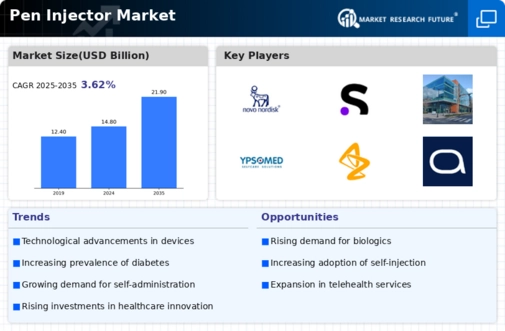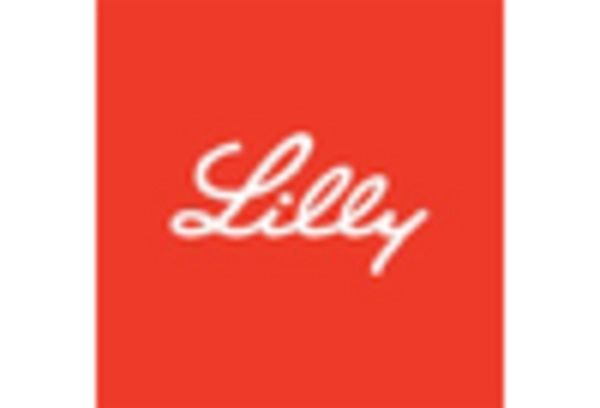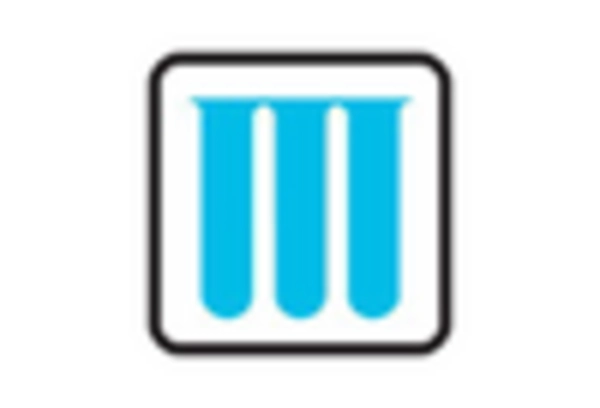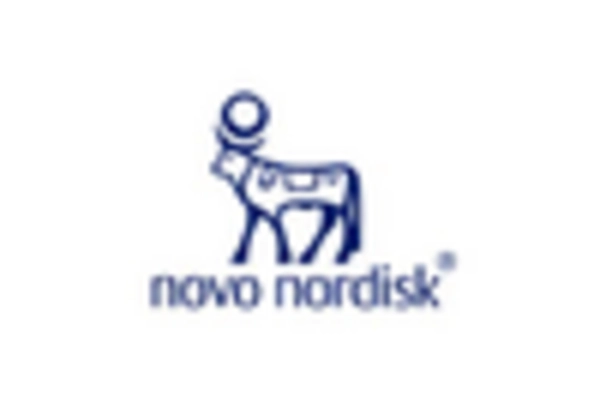Rising Prevalence of Chronic Diseases
The increasing incidence of chronic diseases such as diabetes and arthritis is a primary driver for the Pen Injector Market. As per recent statistics, the number of individuals diagnosed with diabetes is projected to reach 700 million by 2045. This surge necessitates effective management solutions, including pen injectors, which offer convenience and precision in drug delivery. The Pen Injector Market is likely to experience substantial growth as healthcare providers and patients seek efficient methods for administering medications. Furthermore, the aging population, which is more susceptible to chronic conditions, further amplifies the demand for these devices. The combination of a growing patient base and the need for reliable treatment options positions the Pen Injector Market for significant expansion in the coming years.
Supportive Government Initiatives and Funding
Government initiatives aimed at improving healthcare access and affordability are influencing the Pen Injector Market. Various countries are implementing policies to support the development and distribution of advanced medical devices, including pen injectors. Funding programs and incentives for research and development in this sector are becoming more prevalent. For instance, initiatives that promote the use of innovative drug delivery systems are likely to enhance market growth. The Pen Injector Market stands to benefit from these supportive measures, as they encourage manufacturers to invest in new technologies and expand their product offerings, ultimately improving patient access to essential medications.
Technological Innovations in Drug Delivery Systems
Technological advancements in drug delivery systems are reshaping the Pen Injector Market. Innovations such as smart pen injectors, which integrate digital health features, are gaining traction. These devices can track dosage, provide reminders, and connect to mobile applications, enhancing patient adherence to treatment regimens. The market for smart injectors is expected to grow at a compound annual growth rate of over 10% in the next five years. This trend indicates a shift towards more sophisticated and user-friendly devices, catering to the needs of tech-savvy patients. As healthcare continues to evolve, the Pen Injector Market is likely to benefit from these advancements, leading to improved patient outcomes and satisfaction.
Growing Awareness and Education on Diabetes Management
The increasing awareness and education surrounding diabetes management are driving the Pen Injector Market. Educational campaigns aimed at patients and healthcare professionals are emphasizing the importance of effective diabetes control. As a result, more individuals are becoming informed about the benefits of using pen injectors for insulin delivery. Market data suggests that regions with robust educational initiatives are witnessing higher adoption rates of pen injectors. This trend indicates that as awareness continues to grow, the Pen Injector Market is likely to expand, with more patients opting for these devices as part of their diabetes management strategy.
Increasing Demand for Self-Administration of Medications
The growing preference for self-administration of medications is a significant driver for the Pen Injector Market. Patients increasingly favor devices that allow them to manage their treatment independently, particularly in chronic disease management. This trend is supported by the rise of home healthcare services, which empower patients to take control of their health. The Pen Injector Market is responding to this demand by offering user-friendly devices that facilitate self-injection. Market Research Future indicates that the self-injection segment is expected to account for a substantial share of the overall market, reflecting a shift towards patient empowerment and convenience in medication administration.

















Leave a Comment